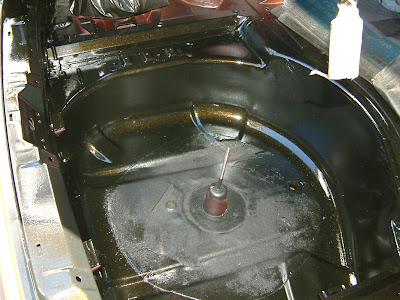The next step I have decided to do is to begin the body work
and prep for the actual paint… woohoo. So what does this involve? Preparing the
body for paint by sanding and making any repairs to dented panels or cracked
paintwork.
Almost instantly I have realised that I should have done
this before painting the door and boot jambs. Why? Because after the sanding, I
need to apply hi-fill primer and any over-spray will get onto the freshly
painted jambs. I will need to mask these off and be careful not to get primer
on them.
What seems like an obvious lesson has just been learnt; prep
and apply all primer before painting anything!
Anyway, moving on… let’s get the body work started. I have
already removed the dodgy mat black paint a previous owner has applied, so I
am just left with the factory original red paintwork.
To get this ready for painting, I just need to wet sand the
gloss off the clear coat. To do this I used a random orbital sander with 240
grit sandpaper followed by 400 grit sandpaper, making sure to keep the sanding
area wet at all times. There is no need to sand through the clear coat, just sand
off the gloss so the new paint has something to bit into. Over sanding can
cause unevenness and will need to be filled and sanded flat again, so the key
is just to knock off the shine. The picture below is of the rear quarter after
sanding and etch priming.
Any areas where the paint is cracked (like in the picture below)
I will need to sand deeper, and in many cases right back to metal. On my car I
have quite a few badly cracked sections on the roof and bonnet, so this will be
more time consuming to sand and repair
To remove cracks, I have sanded through the clear coat and
deep into the base coat until the cracked paint is sanded flat. In the picture below
you can see half the roof has been sanded to remove the cracks. These areas
will need extra coats of hi-fill primer and sanding with 800 grit paper prior
to final painting.
Any area where the paint has bee sanded back to bare metal,
etch primer will need to be applied. Etch primer will adhere to the metal and
provide a surface for the hi-fill primer to bond to. It is very important that
any bare metal be coated with etch primer before applying any other type of
paint. The picture below is my car after being sanded and etch primed, and
ready for hi-fill primer.










